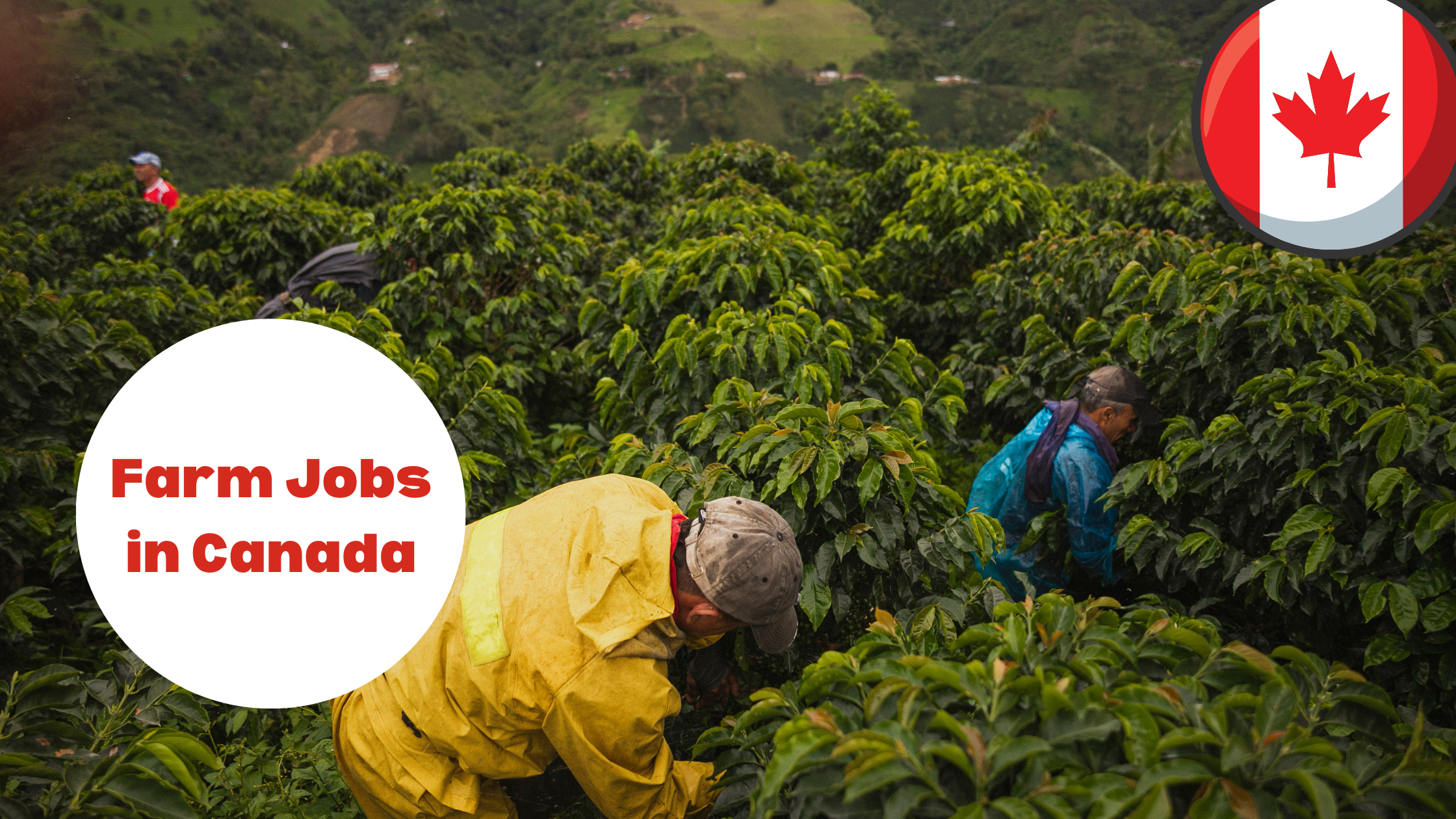Ever dreamed of trading your daily grind for wide-open fields and a fresh start in Canada? Farm jobs in Canada offer more than just a paycheck—they can lead to permanent residency and a new life in a thriving country. If you’re wondering how to turn your skills into a ticket to Canadian citizenship, this article is for you.
This guide covers everything you need to know about farm jobs in Canada that pave the way to permanent residency. You’ll discover the types of jobs available, immigration programs to explore, and actionable steps to secure your future in Canada. Let’s dive into the opportunities waiting for you.
Why Choose Farm Jobs in Canada?
Canada’s agricultural sector faces a massive labor shortage. Over 40% of agricultural workers will retire by 2033, and the country needs 30,000 immigrants to fill these roles. This demand creates a golden opportunity for foreign workers like you to step in and build a career.
Farm jobs don’t always require advanced skills. Many roles, like fruit picking or general farm labor, need only a willingness to learn and a strong work ethic. Plus, these jobs often come with visa sponsorship, making your move to Canada smoother.
Why should you care? Because farm work can be your stepping stone to permanent residency, offering stability, competitive wages, and a high quality of life. Imagine earning $30 per hour while working toward a permanent home in Canada. Sound appealing? Keep reading.
Types of Farm Jobs in Canada
Canada’s farming industry is diverse, spanning crops, livestock, and agribusiness. Here are some in-demand roles that can lead to permanent residency:
- Fruit and Vegetable Pickers: Harvest crops like apples, berries, or tomatoes. These seasonal jobs often qualify for visa sponsorship.
- General Farm Workers: Handle planting, weeding, and equipment maintenance. Many positions are year-round, boosting your eligibility for residency programs.
- Dairy Farm Workers: Manage milking, animal care, and barn operations. Provinces like Ontario and Alberta have high demand.
- Farm Supervisors: Oversee operations and workers. These roles require experience but offer higher pay and stronger residency prospects.
- Livestock Workers: Care for cattle, pigs, or poultry. Alberta’s beef industry, for example, is a hotspot for these jobs.
Each role varies by province. Saskatchewan grows wheat and canola, Ontario leads in soybeans and corn, and Alberta excels in livestock. Where do you see yourself fitting in?
Immigration Pathways for Farm Workers
Canada offers several immigration programs tailored for farm workers. These pathways turn temporary jobs into permanent residency. Here’s how you can make it happen:
Agri-Food Immigration Pilot
Launched in 2020, this program targets non-seasonal farm workers. You need a full-time job offer in an eligible industry, like meat processing or greenhouse work, and at least one year of work experience. The pilot accepts 2,750 applications annually, with an estimated 16,500 new permanent residents, including families, over its duration.
Example: Nataliia Buina, a Ukrainian worker, started as a packer at Truly Green Farms in Ontario. After gaining experience and improving her English, she secured permanent residency through this pilot and bought a home.
Provincial Nominee Programs (PNPs)
Each province has its own PNP, targeting local labor needs. Farm workers often qualify for streams in provinces like Saskatchewan, Ontario, and Alberta. You need a job offer and, in some cases, six months of work experience in the province.
For instance, Saskatchewan’s Semi-skilled Agriculture Worker Program lets workers with six months of local experience apply for residency. Ontario’s In-Demand Skills Stream supports general farm workers and harvesting laborers.
Seasonal Agricultural Worker Program (SAWP)
This program hires workers from Mexico and 11 Caribbean countries for seasonal jobs up to eight months. While SAWP itself doesn’t lead to residency, it can build experience for other programs like the Agri-Food Pilot or PNPs.
Felena Pereira from Trinidad and Tobago worked at Schuyler Farms through SAWP. Her employer sponsored her for permanent residency, allowing her to plan a future for her family in Canada.
Atlantic Immigration Program (AIP)
If you’re eyeing Canada’s Atlantic provinces, like Newfoundland or Nova Scotia, the AIP offers a path for workers with job offers from designated employers. You can work while your residency application is processed, often within 24 months.
Which program suits your goals? Research your options to find the best fit.
Steps to Secure a Farm Job and Permanent Residency
Ready to start your journey? Follow these practical steps to land a farm job and work toward permanent residency:
- Research Job Opportunities: Use job boards like Indeed, Monster, or Canada’s Job Bank to find farm jobs. Focus on provinces with high demand, like Ontario, Saskatchewan, or Alberta.
- Secure a Job Offer: Employers must obtain a Labour Market Impact Assessment (LMIA) to hire you. This proves no Canadian is available for the role. Many farms, facing labor shortages, actively seek foreign workers.
- Apply for a Work Permit: With a job offer and LMIA, apply for a work permit through the Temporary Foreign Worker Program (TFWP) or SAWP. Processing times vary by country, so check Canada’s government website for details.
- Gain Canadian Work Experience: Work at least one year in a non-seasonal role for programs like the Agri-Food Pilot. Seasonal work through SAWP can build experience for other streams.
- Meet Language Requirements: Some programs, like the Agri-Food Pilot, require English or French proficiency. Take tests like IELTS if needed. Start improving your language skills now to stay ahead.
- Apply for Permanent Residency: Choose a program like the Agri-Food Pilot or a PNP. Submit your application early, as some programs, like the Agri-Food Pilot, cap applications on a first-come, first-serve basis.
- Prepare for Arrival: Ensure your employer provides suitable housing and complies with health and safety rules. This sets you up for success in Canada.
Need help? Consult a Regulated Canadian Immigration Consultant (RCIC) to boost your application’s chances.
Key Provinces for Farm Jobs
Where should you look for farm jobs? These provinces lead in agriculture and offer pathways to residency:
- Saskatchewan: Known for wheat, canola, and livestock. The province’s agriculture program supports workers with six months of experience.
- Ontario: Produces 90% of Canada’s soybeans and thrives in greenhouse farming. Its PNP targets farm workers and laborers.
- Alberta: Dominates in beef and organic farming. The Alberta Advantage Immigration Program’s Farm Stream suits experienced workers looking to own or manage farms.
Each province offers unique opportunities. Which one aligns with your skills and lifestyle?
Tips to Stand Out as a Farm Worker
Competition for farm jobs can be tough. Here’s how to get noticed by employers:
- Craft a Strong Resume: Highlight relevant experience, like planting, harvesting, or animal care. Use keywords from job descriptions, such as “crop maintenance” or “livestock management.”
- Network Online: Join agricultural groups on LinkedIn or Facebook to connect with employers. Social media helped Felena Pereira find her job at Schuyler Farms.
- Learn Basic Skills: Familiarize yourself with farming techniques like irrigation or pruning. Even basic knowledge can set you apart.
- Show Commitment: Employers value workers who plan to stay long-term. Express your interest in permanent residency during interviews.
What skills can you bring to a Canadian farm? Start building them now.
Challenges and How to Overcome Them
Farm work isn’t always easy. You might face long hours, physical demands, or language barriers. Here’s how to tackle these challenges:
- Physical Demands: Prepare by staying fit and learning proper techniques for tasks like lifting or harvesting.
- Language Barriers: Enroll in English or French classes. Nataliia Buina took language courses to improve her skills and secure a better role.
- Visa Delays: Apply early and ensure all documents are complete. Work with an RCIC to avoid errors.
- Housing Issues: Confirm your employer provides safe accommodations, as required by Canadian law.
Facing these challenges head-on builds your resilience and strengthens your residency application.
Why Permanent Residency Matters
Permanent residency offers more than just a job. It grants access to healthcare, education, and the chance to apply for citizenship. You can bring your family, enjoy a stable income, and live in a country with a high standard of living. For example, farm workers in Canada earn an average of $35,100 annually, far higher than in many countries.
What does a secure future in Canada mean to you? It’s within reach if you take the right steps.
Take Action Today
Farm jobs in Canada open doors to permanent residency, but you need to act fast. Job opportunities and immigration programs have limits, and early applications stand the best chance. Start by searching for jobs on trusted platforms, connecting with employers, and exploring programs like the Agri-Food Pilot or PNPs.
Your dream of living in Canada is closer than you think. Which step will you take first?




Please how can I apply
Two years ago I was get Canadian visa for two with in scholarship but unfortunately I have forbidden my they return empty passport from Kenya I don’t know the reason behind that so I need work visa again from Canada please help me am from ethiopia
Thank you for the information
Help mee